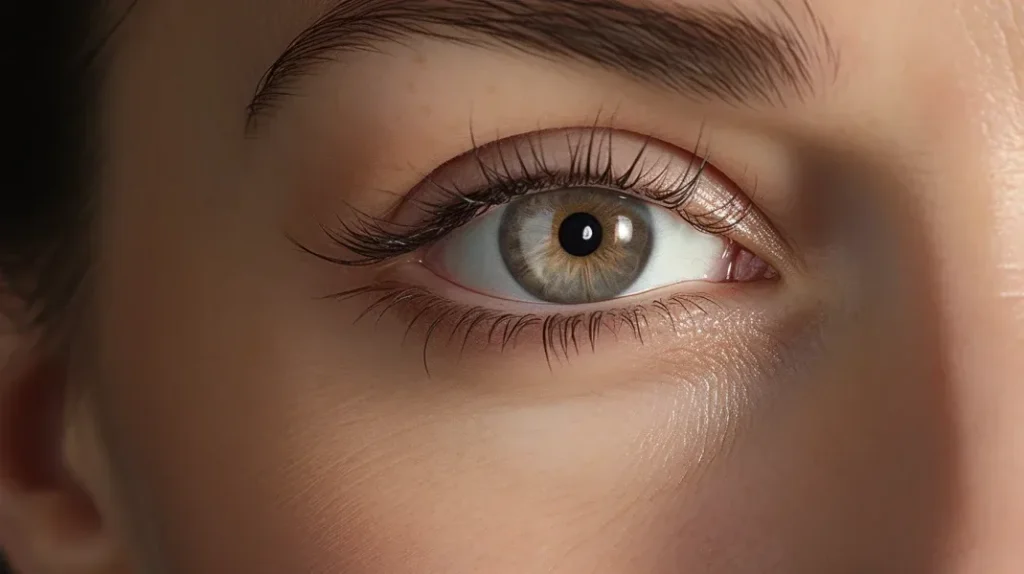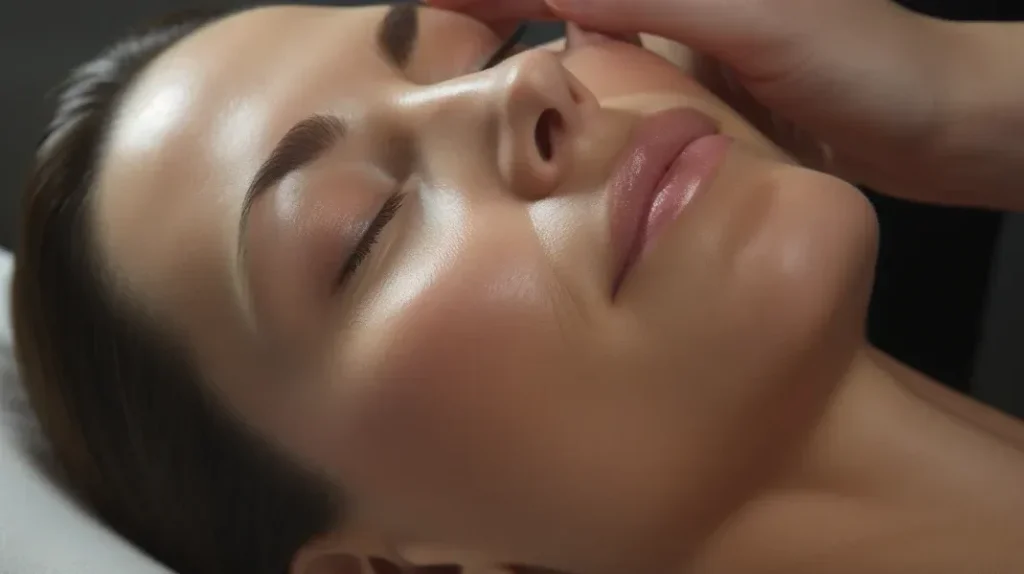Can You Use Retinol After Botox? Skincare Post-Treatment Tips
Did you know that over 7 million Botox procedures were performed in the United States last year alone? Suppose you’re one of the many people who have experienced the benefits of Botox and are now considering incorporating retinol into your skincare routine. In that case, you may be wondering if it’s safe and effective. Well, you’re in luck.
In this article, we will explore the question, ‘Can you use retinol after Botox?’ and provide you with valuable post-treatment skincare tips.
Discover the ideal timeframe for introducing retinol after Botox, learn about the effects of retinol on Botox-treated skin, and gain insight from dermatological perspectives on combining these two powerful treatments.
Get ready to unlock the secrets of post-Botox skincare with retinol and achieve your desired skin rejuvenation goals.
Key Takeaways
- The suitable timeframe for introducing retinol after Botox should be discussed, considering the individual patient’s needs and dermatologist recommendations.
- Retinol can have effects on Botox-treated skin, and it is essential to examine how these two treatments can work together to achieve optimal results.
- Dermatological perspectives and studies on the combination of retinol and Botox should be reviewed to understand the potential benefits and risks.
- Skincare protocols for patients after Botox should incorporate the use of retinol, taking into account personalized skincare plans and the importance of post-procedure skin maintenance.
Suitable Timeframe for Retinol After Botox

When it comes to incorporating retinol into your skincare routine after receiving Botox, it’s crucial to consider the appropriate timeframe for optimal results.
After getting Botox injections, it’s recommended to wait at least 24 hours before introducing retinol into your skincare regimen. This delay between Botox and retinol application is essential to minimize the risk of any potential side effects and ensure the best possible outcome for your skin.
Retinol, a derivative of vitamin A, is known for its anti-aging properties and ability to improve skin texture and tone. However, it can be potent and cause irritation or sensitivity, mainly when used immediately after Botox. Waiting for a day allows the Botox to settle and reduces the risk of any negative interactions between the two treatments.
Effects of Retinol on Botox-Treated Skin

Understanding how retinol interacts with Botox-treated skin is crucial for anyone looking to maximize the benefits of both treatments while ensuring skin safety. Here are critical insights into this combination:
- Synergistic Effects for Enhanced Wrinkle Reduction:
- Complementary Actions: Retinol complements Botox by targeting skin aging at a cellular level, enhancing collagen production, and accelerating skin renewal.
- Prolonging Botox Effects: Regular use of retinol can help maintain and prolong the wrinkle-reducing effects of Botox, leading to more sustained improvements in skin texture and appearance.
- Timing and Application Post-Botox:
- Post-Treatment Waiting Period: It’s recommended to wait at least 24-48 hours after Botox treatment before applying retinol. This allows the Botox to settle and minimizes potential skin irritation.
- Gradual Introduction: If new to retinol, start with lower concentrations and gradually increase usage as your skin acclimates, especially after Botox.
- Impact on Wrinkle Reduction:
- Targeted Wrinkle Care: Retinol accelerates skin cell turnover, aiding in the reduction of fine lines and wrinkles and improving skin texture.
- Boosting Skin Health: With its ability to stimulate collagen, retinol not only enhances Botox results but also contributes to overall skin health and resilience.
- Following Dermatological Guidelines:
- Professional Advice: Always consult with a dermatologist or skincare professional before combining retinol with Botox, particularly regarding the appropriate timing and product selection.
- Customized Skincare Routine: Your skin care professional can tailor a routine that considers both your Botox treatment and the incorporation of retinol, ensuring compatibility and effectiveness.
Dermatological Perspective on Combining Botox and Retinol

Exploring the synergistic effects of Botox and retinol, dermatology experts shed light on the safe and effective combination of these two renowned anti-aging therapies. Botox, a neuromodulator, is acclaimed for its ability to temporarily diminish fine lines and wrinkles by relaxing facial muscles. Retinol, a derivative of Vitamin A, is celebrated in the skincare realm for its profound anti-aging and skin-rejuvenating properties.
Dermatological consensus supports the concurrent use of retinol with Botox treatments, given adherence to specific precautions. Key among these is the recommendation to initiate retinol application at least 24 hours post-Botox treatment, ensuring optimal settling of the neuromodulator and mitigating any risks of adverse skin responses. Starting with a low retinol concentration and progressively increasing, it is advised to reduce potential skin irritation or sensitivity.
Dermal fillers are a popular cosmetic treatment used to enhance facial expressions and improve the appearance of wrinkles, particularly facial wrinkles. These injectable fillers, often containing substances like hyaluronic acid, are designed to increase collagen production and improve skin cell turnover, resulting in a more youthful appearance.
When undergoing dermal filler treatments, it’s important to consider factors like blood flow and the use of blood thinners. Patients on blood-thinning medications should consult with their healthcare provider before the procedure to minimize the risk of bruising or bleeding at injection sites. Physical activity and strenuous exercise are generally discouraged immediately after the treatment to ensure proper healing and to maintain the integrity of the filler.
In addition to the actual treatment, a regular skincare routine, including protection from sun damage, is vital. Using products like vitamin C serums can further enhance the skin’s appearance and health, complementing the effects of the dermal fillers.
Laser treatment can also be combined with dermal fillers for comprehensive facial rejuvenation. This combination can address sun damage and improve the overall texture and tone of the skin. As with any cosmetic procedure, it’s crucial to consult with a qualified professional to determine the most appropriate treatment plan for individual skin concerns and goals.
Adhering to best practices, dermatologists recommend incorporating a mild cleanser and hydrating moisturizer into your skincare routine post-Botox and retinol application. This approach nurtures skin health, avoiding abrasive skincare products that could compromise Botox efficacy or provoke skin irritation. The importance of sunscreen application is underscored, as retinol usage heightens skin’s vulnerability to UV rays. This detailed analysis offers a comprehensive understanding of combining Botox and retinol, aligning with current dermatological trends and ensuring an informative, engaging read for those seeking to enhance their skincare regimen.
Skincare Protocols for Post-Botox Patients With Retinol
After receiving Botox treatment, incorporating retinol into your skincare routine can help enhance and maintain your results. However, it is essential to follow proper skincare protocols to ensure optimal post-procedure skin maintenance. Dermatologists recommend waiting at least 24 hours after Botox before starting retinol application. This allows for the initial healing process and reduces the risk of skin irritation.
When introducing retinol into your routine, it is crucial to start with a low concentration and gradually increase as your skin becomes accustomed to it. This helps minimize potential side effects such as redness, dryness, and flaking. Additionally, it is advisable to use retinol at night and apply a broad-spectrum sunscreen during the day to protect your skin from sun damage.
Here is a helpful table outlining a basic skincare protocol for post-Botox patients incorporating retinol:
| Timeframe after Botox | Skincare Routine |
|---|---|
| 24 hours | Gentle cleanser |
| – | Moisturizer |
| – | Avoid harsh exfoliants |
| – | Avoid facial massage |
| 1 week | Introduce low concentration retinol |
| – | Apply at night |
| – | Follow with moisturizer |
| 2 weeks | Increase retinol concentration |
| – | Continue nightly application |
| – | Apply sunscreen during the day |
Engaging Visuals and Real-Life Cases With Botox and Retinol
To truly understand the benefits of combining Botox and retinol, visual evidence and real-life cases can provide valuable insights into the transformative effects of this skincare duo. When it comes to anti-aging treatments, retinol has long been hailed as a powerful ingredient for skin rejuvenation. Its ability to promote collagen production and increase cell turnover makes it an ideal addition to any skincare routine. Botox, on the other hand, targets dynamic wrinkles by temporarily relaxing the muscles that cause them. By combining Botox and retinol, you can address both the surface-level signs of aging and the underlying causes.
Real-life cases have shown that when used together, Botox and retinol can significantly enhance the overall results. Patients who’ve incorporated retinol into their post-Botox skincare regimen have reported smoother, firmer skin with reduced fine lines and wrinkles. The combined effects of Botox and retinol can lead to a more youthful and rejuvenated appearance.
However, it’s important to note that skincare isn’t a one-size-fits-all approach. Each individual has unique skin concerns and needs, which is why patient-specific skincare plans are crucial. Consulting with a dermatologist or skincare professional is recommended to determine the most effective combination and application of Botox and Retinol for your specific goals.
Latest Trends in Integrating Retinol Into Post-Botox Skincare
The fusion of Botox and retinol represents a cutting-edge trend in skincare, aiming to optimize the rejuvenation effects of both treatments. Retinol, a vitamin A derivative, is esteemed for its potent anti-aging attributes, notably in boosting collagen production and refining skin texture. Its integration with Botox, a non-surgical facial treatment, amplifies the overall anti-aging impact, offering a holistic approach to skin renewal.
Dermatology experts commonly advocate for the inclusion of retinol in post-Botox skincare regimens. However, timing and safe application are pivotal. The standard guideline is to introduce retinol into the skincare routine 24 to 48 hours after Botox injections, allowing the Botox to fully integrate into the skin while minimizing potential sensitivity or irritation risks.
Initiating retinol use post-Botox involves a cautious approach. Beginning with lower retinol concentrations and progressively increasing its use is recommended to avert adverse reactions. Crucial to this regimen is the incorporation of moisturizers and sun protection, safeguarding the skin against dryness and UV damage, which are heightened due to retinol’s properties.
Comprehensive Approach to Skin Health: Understanding the Combined Impact of Retinol and Botox
When deliberating the joint application of retinol and Botox, grasping the extensive implications and advantages of this skincare synergy is essential. Retinol and Botox, each with distinct benefits, collaboratively address aging signs and enhance skin appearance.
Retinol’s role is pivotal in collagen synthesis stimulation. Collagen, the structural protein responsible for skin elasticity, diminishes with age. Retinol’s application boosts collagen, fostering a youthful, radiant complexion.
Botox, renowned for its efficacy in softening dynamic wrinkles caused by facial expressions, complements retinol’s collagen-boosting effects. This dual-action approach targets muscle activity and collagen stimulation, offering a comprehensive anti-aging strategy.
Prioritizing safety in cosmetic treatments is vital. Consulting with dermatology professionals before combining retinol and Botox is crucial for tailored advice and risk minimization. Adhering to recommended application techniques and dosages ensures the safest, most effective skincare experience.
Comprehensive Analysis of Post-Botox Skincare With Retinol
Let’s conduct a thorough analysis of incorporating retinol into a post-Botox skincare regimen, focusing on critical aspects such as timing, dermatological recommendations, and patient-specific skincare protocols.
Timing and Efficacy of Retinol Post-Botox
To harness the full potential of retinol following Botox treatments, understanding the optimal timing and its impact is essential. Retinol, a potent anti-aging ingredient, augments skin treatment results when used judiciously. The consensus among skincare professionals suggests a waiting period of approximately two weeks post-Botox before starting retinol. This precaution ensures proper healing and reduces the likelihood of adverse effects. Premature application of retinol may interfere with Botox’s effectiveness, compromising the desired aesthetic outcomes. Adhering to this timeframe and using retinol as recommended can significantly boost the combined benefits, leading to enhanced skin rejuvenation.
Dermatological Insights on Combining Retinol with Botox
Dermatologists provide crucial insights into the synergy of retinol and Botox within a post-treatment skincare routine. Their expertise highlights:
- Synergistic Effects: Combining retinol and Botox can produce synergistic benefits. Retinol stimulates collagen production and skin renewal, complementing Botox’s wrinkle-reducing effects. This combination can lead to improved skin texture and prolonged Botox results.
- Gradual Introduction: Professionals recommend introducing retinol into the skincare regimen 24-48 hours after Botox treatment. This interval allows the Botox to settle, reducing potential skin irritation or reactions.
- Individualized Skincare Plans: Dermatologists stress the importance of customized skincare strategies. They advise considering individual skin types, previous treatments, and desired outcomes when deciding the appropriate retinol concentration and usage timeline.
Patient-Specific Skincare Protocols Post-Botox
After understanding the dermatological viewpoint, it’s vital to explore the specific skincare protocols patients should follow post-botox:
- Delay Retinol Application: Postpone retinol is used immediately after Botox to allow adequate recovery time for the skin.
- Personalized Dermatologist Consultation: Seek advice from a skincare professional to tailor the introduction of retinol to your post-botox routine.
- Gradual Retinol Introduction: Start with a lower retinol concentration, gradually increasing it over time. This approach helps minimize skin irritation and adapt to the treatment.
By following these guidelines and protocols, patients can maximize the benefits of their post-Botox skincare routine, ensuring safety, effectiveness, and long-term skin health.
Frequently Asked Questions
Can You Use Retinol After Botox Treatment?
Yes, you can use retinol immediately after receiving Botox treatment. It’s safe and can help enhance the results. However, it’s best to consult with your dermatologist for personalized skincare advice.
What Are the Potential Side Effects of Using Retinol on Botox-Treated Skin?
Using retinol on Botox-treated skin can cause side effects such as redness, irritation, and dryness. It is essential to wait a few days after Botox before incorporating retinol into your skincare routine.
Are There Any Specific Guidelines or Recommendations From Dermatologists Regarding the Combination of Botox and Retinol?
Dermatologists offer specific guidelines and recommendations for combining Botox and retinol. It’s essential to follow their advice to ensure the best results.
What Is the Recommended Skincare Routine for Patients After Receiving Botox That Includes the Use of Retinol?
After receiving Botox, you can incorporate retinol into your skincare routine. It is recommended to wait at least 24 hours before applying retinol to avoid any potential irritation. Consult with your dermatologist for personalized advice.
Can You Provide Real-Life Examples or Case Studies of Individuals Who Have Successfully Incorporated Retinol Into Their Post-Botox Skincare Regimen?
Yes, you can use retinol after Botox. Some individuals have successfully incorporated retinol into their post-Botox skincare regimen, leading to improved skin texture and reduced signs of aging.
Conclusion
Incorporating retinol into your skincare routine after receiving Botox injections can be a powerful way to enhance the longevity and effectiveness of your results.
By following the suitable timeframe for introducing retinol, understanding the effects on Botox-treated skin, and following personalized skincare protocols, you can achieve your desired skin rejuvenation goals.
Let retinol be the symbol of transformation and renewal as you embark on your post-Botox skincare journey.


